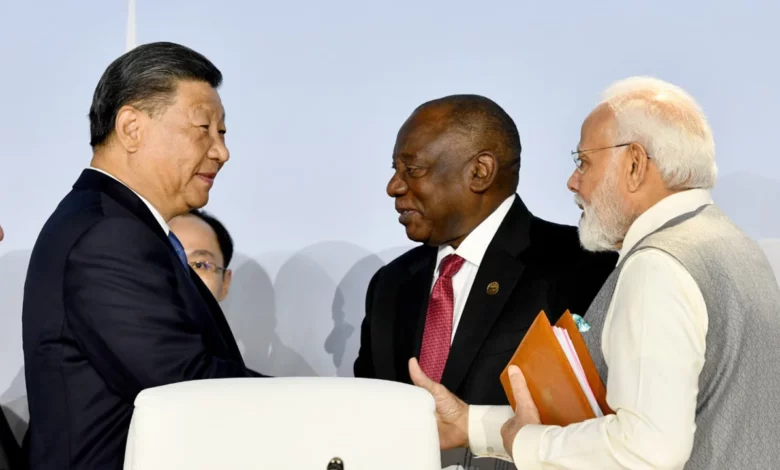
Modi and Xi, who are in Johannesburg for the BRICS economic group meeting, had a conversation on the sidelines of the summit, India’s Foreign Secretary Vinay Kwatra told reporters Thursday, one day after the Chinese leader mysteriously skipped a key event.
Face-to-face meetings between the leaders of India and China, the world’s two most populous nations, are rare.
The disputed border has long been a source of friction between New Delhi and Beijing, with the agitation spilling into a 1962 war that ended in a Chinese victory. In the ensuing years, an ill-defined de facto border called the Line of Actual Control (LAC) has split the two nuclear powers.
“(Modi) underlined that the maintenance of peace and tranquility in the border areas, and observing and respecting the LAC are essential for the normalization of the India-China relationship,” Kwatra said.
In a statement Friday, China’s Ministry of Foreign Affairs said the two leaders “had a candid and in-depth exchange of views on current China-India relations” among other interests.
“President Xi stressed that improving China-India relations serves the common interests of the two countries and peoples,” it added. “The two sides should bear in mind the overall interests of their bilateral relations and handle properly the border issue so as to jointly safeguard peace and tranquility in the border region.”
The meeting, which will be seen as a step toward mending their fraught relationship, comes one week after India and China engaged in their 19th round of talks to resolve their border issue.
“The two sides had a positive, constructive and in-depth discussion on the resolution of the remaining issues along the LAC in the Western Sector,” India’s Ministry of External Affairs said in a statement.
Modi and Xi attended the Shanghai Cooperation Organization (SCO) summit in Uzbekistan in September last year, but did not engage diplomatically. They had a brief conversation weeks later on the sidelines of the Group of 20 (G20) leaders’ meeting in Bali, Indonesia.
Tensions between the two countries soured significantly after a deadly clash in Aksai Chin-Ladakh in 2020, and escalated last December when a brawl between troops from both sides in the Tawang sector of India’s northeastern territory of Arunachal Pradesh resulted in minor injuries.
In April, India’s defense minister told his Chinese counterpart that violations of their shared border erode the “entire basis” of relations between the two neighbors.
Since the 2020 clash, India has taken several steps to push back against perceived threats from China, including banning social media platform TikTok and other well-known Chinese apps, saying they pose a “threat to sovereignty and integrity,” while also moving to block Chinese telecoms giants Huawei and ZTE from supplying its 5G network.
More recently, the two countries have seemingly cracked down on reporters and have few or no accredited journalists on the ground in each other’s territory.
Amid rising nationalism in both countries, concerns in New Delhi of Beijing’s increasing assertiveness has also bolstered India’s relationship with the United States, including via the Quadrilateral Security Dialogue, or Quad – a grouping of Japan, the US, India and Australia widely seen as a counterweight to China.
China earlier this year boycotted a G20 tourism meeting hosted by India in the Himalayan territory of Jammu and Kashmir, citing its opposition “to holding any kind of G20 meetings in disputed territory.” India and Pakistan both claim the disputed Kashmir region in its entirety.
India’s decision to host this year’s SCO virtually meant that Modi and Xi did not have an opportunity for a face-to-face meeting. Xi is also expected to attend the G20 leaders’ summit in New Delhi next month.
CNN’s Nectar Gan contributed reporting




